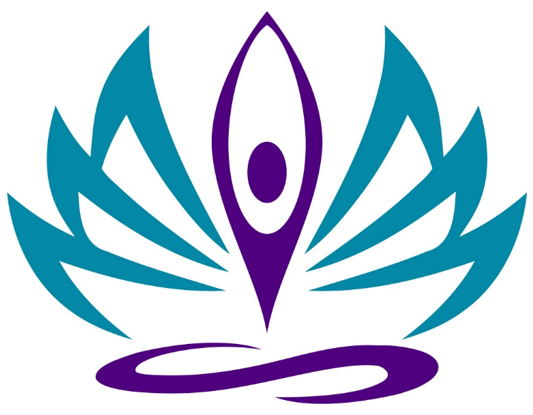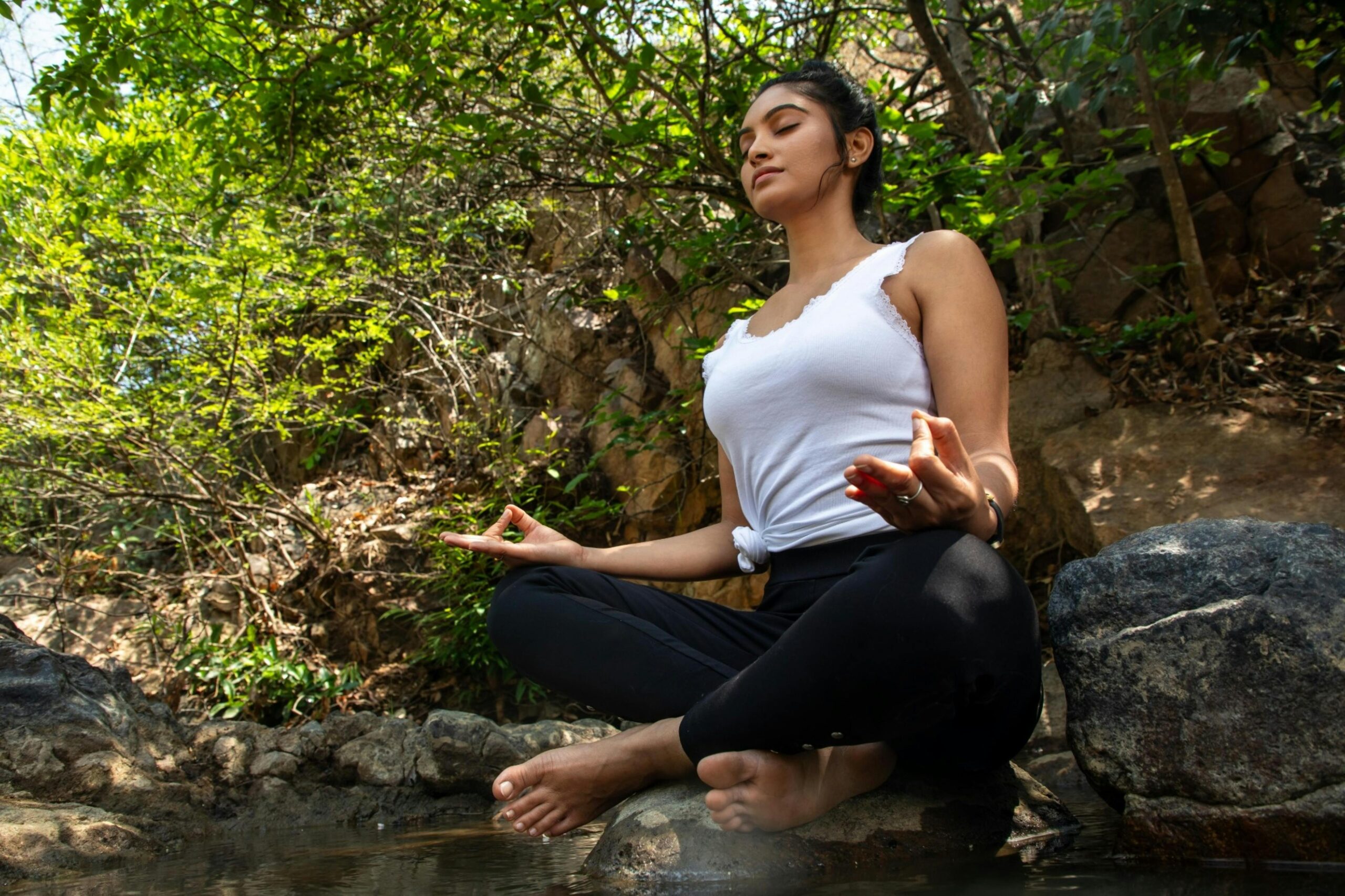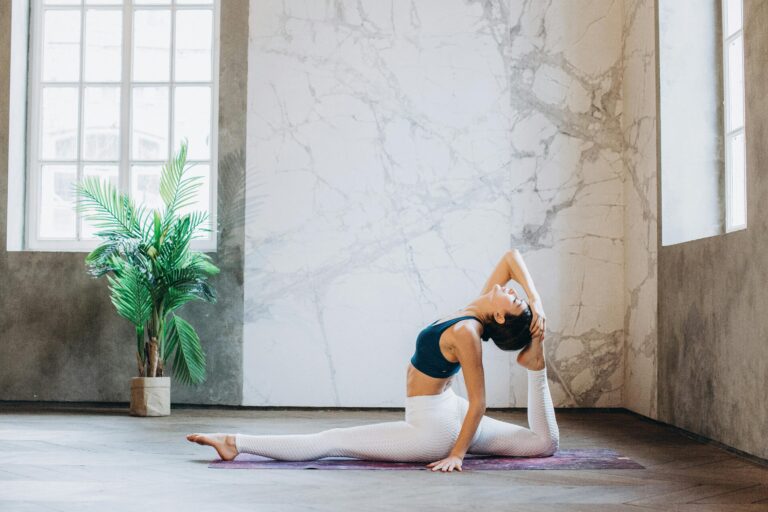15 minutes just for you: Why small yoga sessions can make a lasting difference to your everyday life
Do you know the feeling of working for others all day long - fulfilling tasks, working through to-do lists, being available? You often end up with little space for yourself. But it is precisely this space that is crucial. Not in the form of long time-outs or weekend retreats, 15 minutes a day that are just for you are often enough.
Why 15 minutes is enough
Many people believe that yoga is only "right" if you spend 90 minutes on the mat. But the truth is that it's not the duration that counts - it's the regularity and how committed you really are.
From a biomechanical point of view, the body is not built for long periods of sitting and monotonous movement patterns. After just a few minutes of conscious movement:
- the spine realigns itself,
- the chest expands,
- activates the muscles in the torso and hips,
- and the joints become more mobile again.
The result: Tension eases, your breathing becomes freer and you feel better again - not only physically, but also internally.
The power of a short yoga session
From a psychological point of view, a daily yoga practice of just 15 minutes acts like a consciously set anchor. A moment of self-connection - in the middle of everyday life.
If you connect with yourself briefly during the hectic pace of the day, you give your nervous system the signal: I am safe. I am with me.
This reduces inner pressure, calms the carousel of thoughts and gives you emotional stability.
This regular return to yourself helps:
- to exit the function mode,
- to better perceive their own needs,
- and to live more present and relaxed in the long term.
Physically anchored, inwardly connected
From the perspective of functional anatomy, a short but targeted yoga practice brings movement to precisely those structures that are underchallenged or one-sidedly stressed in everyday life:
- The connection between the torso and pelvis is strengthened.
- Shoulders, neck and lower back are relieved.
- Fasciae that "stick together" due to monotonous postures start to move again.
- The breathing space is opened - which not only regulates the lungs, but also the nervous system and the vagus nerve.
The great thing is that these changes don't happen "in your head", but in your body - and from there they affect your entire system. Did you know that relaxing your muscles reduces stress hormones such as cortisol more quickly?
15 minutes that belong to you: Your mini-ritual
I have recorded a 15-minute yoga session for you, which you can watch on my YouTube channel:
Alternatively, you can find a few exercises below that will help you get back to yourself and do you good.
1. heart breathing
- Find a comfortable fit
- Place both hands on your heart with light pressure
- Breathe in deeply through your nose and exhale noisily through your mouth.
- Feel your heart, feel how you feel, feel your breath. And with every exhalation: let go of everything that no longer serves you.
- Stay here for 8-10 deep breaths or as long as it feels good for you.
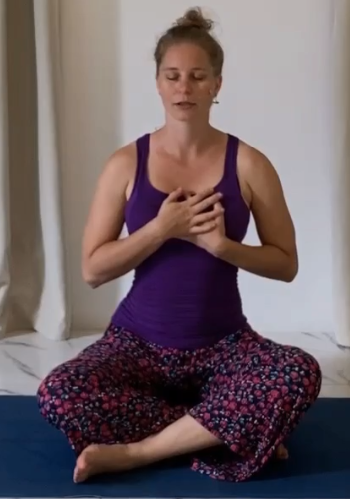
2. flank stretching
- Sit cross-legged.
- Then raise your left arm and bring your right hand to the floor.
- Lean as far over to the right side as possible while still keeping your sitting bones on the floor
- Stay here for 4-6 breaths, then change sides
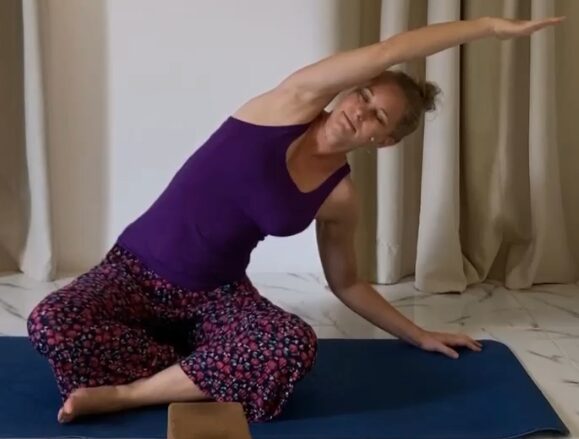
3. stretching in the upper back
- Sitting cross-legged
- Clasp your hands together & press your thumbs against each other.
- Turn your palms outwards and raise your arms upwards, backwards into a slight backbend
- As you exhale, bring your arms and upper body down to the front, round your back and enjoy the stretch in your upper back
- Flow up and down with your breathing 6-8 times
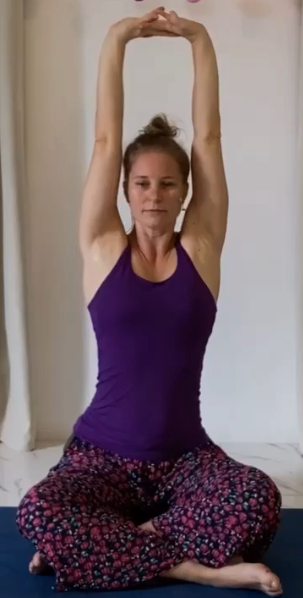
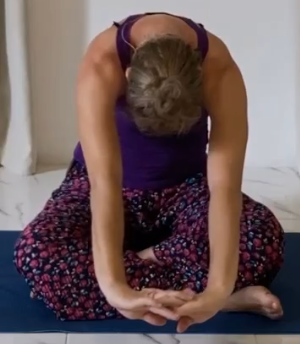
4. forward bend in a sitting position
- Sit cross-legged with your feet slightly away from you and your knees about hip-width apart (Sukhasana)
- Bend forward with your upper body, your upper back is round.
- You can rest your forearms on the floor or on blocks.
- Let go of everything here and bring relaxation into your body.
- Stay here for 6-8 breaths, then change the interlacing of the legs and return to the stretch.
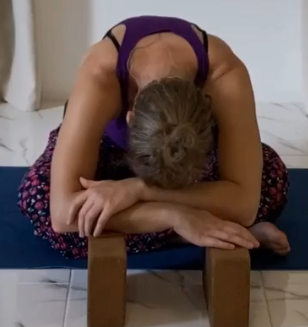
5. swivel seat
- Sitting cross-legged
- Turn to the right side
- Place your left hand on the outside of your right thigh and place your right hand on the floor behind you.
- The head looks over the right shoulder
- Straighten up with each inhalation and check whether you can intensify the twist with each exhalation.
- Stay here for 4-6 breaths, then come back to the center and switch to the other side.
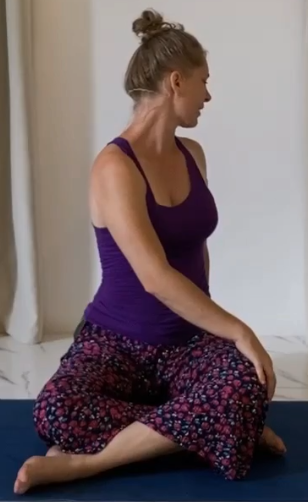
This simple practice brings you back to yourself. It is not a 'workout', but a conscious moment in which you strengthen your inner connection - physically and mentally.
Conclusion: Small practice, big impact
You don't need a free hour. No perfect setting. No elaborate preparation.
What you need is the desire to give yourself space - and the willingness to engage in 15 minutes of connection and presence. It is precisely in these small, everyday moments that change begins.
15 minutes that belong only to you. Every day. You will feel what a difference it makes.
